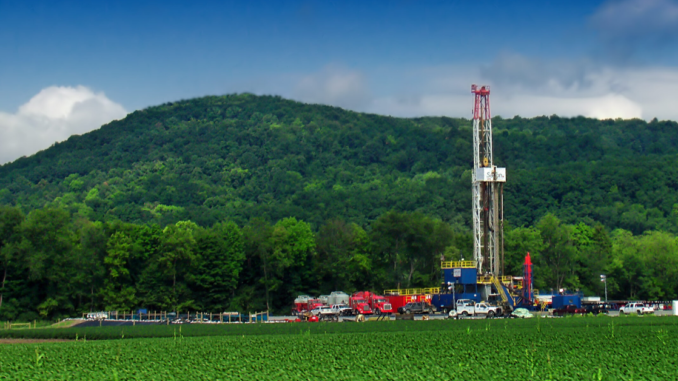
Built on a foundation of abundant natural gas resources, Pennsylvania is a powerhouse when it comes to producing and exporting energy. This energy advantage has served Pennsylvanians well – affordable, efficient natural gas, thousands of good jobs, billions of dollars in revenues for the state and communities and measurable emissions reductions.
Natural gas continues to be a major strategic asset for Pennsylvania – one that’s recognized around the state and across the world. And we can’t forget that the derivatives of natural gas make our modern way of life possible as they are the building blocks of products that we utilize every day such as cell phones, clothing, eyewear, automobiles, pharmaceuticals, state-of-the-art medical equipment and so much more.
Key economic driver
Earlier this year, Governor Josh Shapiro prioritized energy as one of five pillars of economic development in his ten-year strategic plan for Pennsylvania, with natural gas playing a lead role. The governor is right to recognize Pennsylvania natural gas as a tool for driving economic growth, including opportunities in hydrogen and carbon capture, while strengthening our energy future.
Today, the natural gas and oil industry in Pennsylvania supports over 423,000 jobs, or 5.6 percent of the state’s employment, and generates $75 billion for the state’s economy. Nationwide, the natural gas and oil industry supports nearly eleven million jobs and contributes $1.8 trillion to the U.S. gross domestic product.
Leveraging Pennsylvania’s natural gas reserves has also generated over $2.5 billion in impact fee revenues for programs at the state and various local projects in all 67 counties – from road and bridge repairs to conservation and park improvement projects – since the tax was imposed in 2012.
According to the Pennsylvania Public Utility Commission, which is responsible for collecting and distributing the impact tax to state agencies and local governments, reported that Washington, Susquehanna, Bradford, Greene, Lycoming, Tioga and Butler – the “top receiving counties,” respectively, were awarded a total of $43 million in 2022 alone.
But it isn’t only areas with natural gas development that benefit.
Philadelphia County received more than $1.8 million in natural gas impact tax funds while Lancaster and York counties were awarded more than $661,000 and $548,000, respectively.
Affordable, reliable energy for consumers
Over the past fifteen years, the efficient and effective combination of hydraulic fracturing and horizontal drilling has enabled the exploration of previously inaccessible natural gas and oil reserves in America. This revolution resulted in a dramatic shift in U.S. natural gas supply and demand flows, ushering in a new era of low-cost natural gas supply and transforming the U.S. and the Appalachia region into an energy superpower.
Even as America continues to be the global leader in natural gas production, U.S. residential natural gas prices remain among the lowest in the world, as a new study by Energy Ventures Analysis shows. During the first six months of 2023, when the U.S. was exporting liquefied natural gas (LNG) at record levels, domestic natural gas prices were at their lowest level in more than 35 years, outside of the Covid-19 pandemic.
Before considering natural gas bans or other restrictive proposals, politicians should pause to consider what it could mean for Pennsylvanians’ budgets to sideline the most affordable residential energy source.
Environmental progress and emissions reductions
America’s natural gas and oil industry is producing and moving energy in cleaner, safer and more efficient ways than ever before. In fact, the U.S. is the global leader in emissions reductions. And Pennsylvania-produced natural gas has been instrumental in helping to advance environmental goals and emissions reductions.
Increased use of natural gas in the power sector has helped to reduce carbon dioxide emissions (CO2) – accounting for more than 60 percent of CO2 emissions reductions from fuel switching in electricity generation since 2005. Natural gas produced in Pennsylvania, the second-largest producing state in the U.S., has helped America significantly reduce its carbon footprint.
The natural gas and oil industry is also driving innovation and sharing best practices to reduce methane emissions, and that work is paying off.
Between 2015 and 2022, methane emissions from onshore natural gas and oil production fell by 37 percent, while production increased by 39 percent, resulting in a decrease in methane emissions intensity of 55 percent. In Appalachia specifically, production almost doubled (87 percent increase) while methane emissions fell 23 percent, resulting in methane intensity falling 59 percent.
An industry-led effort, The Environmental Partnership, composed of over 100 companies and representing nearly 70 percent of the U.S. onshore natural gas and oil industry, is advancing technology and procedures to reduce methane emissions. In 2022, participants reported more than 4,000 zero-emission pneumatic controllers were installed at new sites and a fourteen percent reduction in total flare volumes compared to the previous year.
Natural gas is a significant part of the equation for securing Pennsylvania’s economic and energy future. Policies that ignore the benefits of affordable, reliable and cleaner-made natural gas for consumers and communities could harm Pennsylvania in the short and long term. To strengthen our state’s energy advantage, we need policies that acknowledge the value of Pennsylvania natural gas and help to advance energy exploration and infrastructure, not restrict it.
Stephanie Catarino Wissman is the Executive Director of the American Petroleum Institute Pennsylvania.



